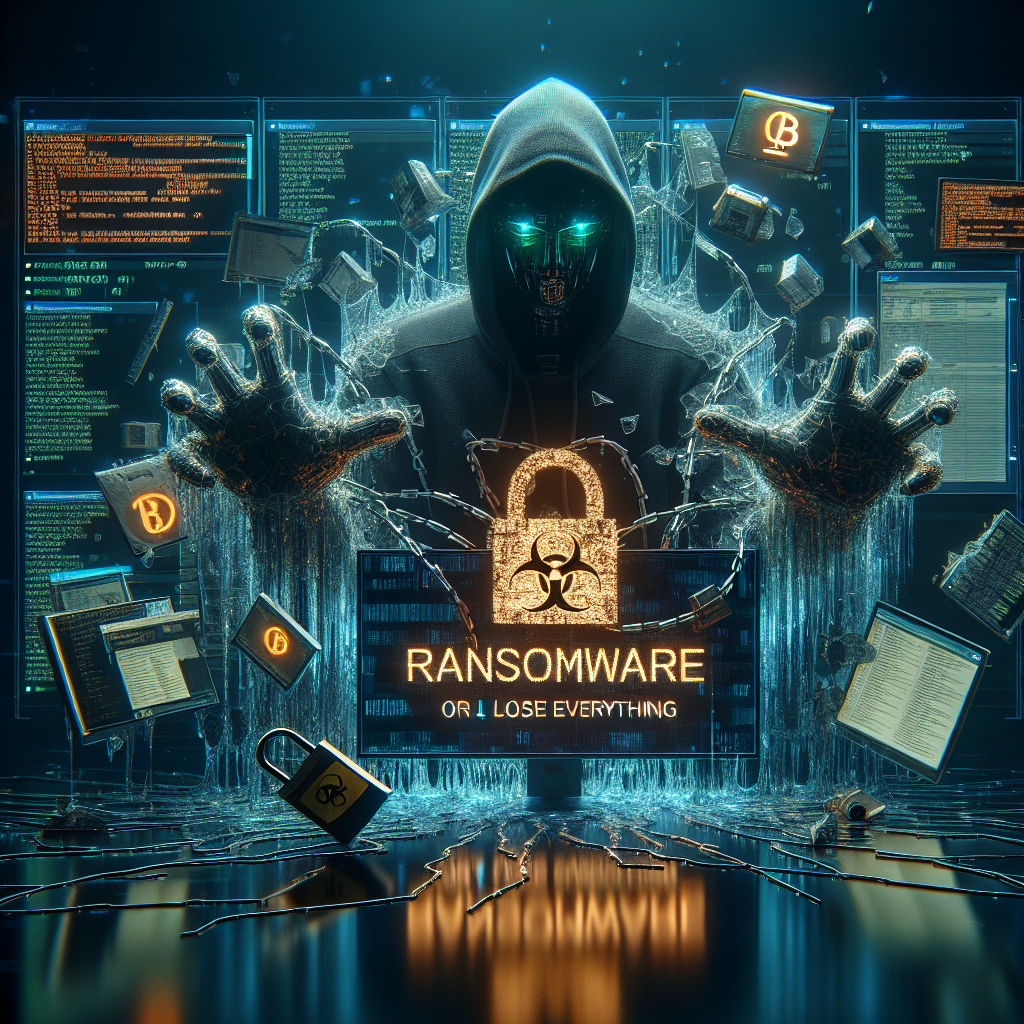As cybercrime continues to grow, ransomware threats have become an increasingly pressing concern for individuals and organizations alike.
The digital age has brought great convenience and connection. However, it has also led to a rise in cybercrime. One of the biggest threats is ransomware. This is a type of harmful software that locks a victim’s files. The files stay locked until the victim pays a ransom to the attackers. As more people and businesses use digital systems, ransomware has become a significant cybersecurity issue.
What is Ransomware?
Ransomware attacks usually start with a phishing email or a harmful link. When someone clicks on it, the ransomware downloads onto their device. Once the malware starts, it spreads through the system. It locks files and asks for payment, often in cryptocurrencies like Bitcoin, for the key to unlock the files. The ransom can range from hundreds to millions of dollars, depending on the data’s value and the victim’s size.
There are different types of ransomware, including:
- Crypto-ransomware: This type locks the victim’s files, making them unusable.
- Locker ransomware locks users out of their devices, stopping access to files and apps.
- Scareware: This shows scary messages to trick users into paying a ransom for fake problems.
The threat of ransomware is growing. Attackers use clever tricks and find weaknesses in software to break through security.
The Economic Impact
The economic effects of ransomware are huge. Experts say ransomware attacks cost businesses billions each year. This includes ransom payments, recovery costs, and lost productivity during downtime. A 2021 report showed that the average ransom payment was over $500,000. Organizations also face reputational damage and fines.
High-profile attacks, like the Colonial Pipeline incident in May 2021, caused fuel shortages in the Eastern United States. The JBS Foods attack closed several meat processing plants. These events show how ransomware can disrupt critical services and supply chains. Ransomware is a personal or business issue and a national security concern.
Changing Tactics and Targets
Ransomware has changed significantly over the years, especially regarding who it targets. Attackers used to focus on individuals or small businesses. Now, they target larger companies, healthcare providers, and local governments. These groups are more likely to pay large ransoms to avoid disruptions.
Ransomware-as-a-Service (RaaS) is a troubling trend. It allows people with little technical skill to launch attacks. RaaS platforms provide ransomware tools and help. In return, they take a portion of the ransom. This makes it easier for more people to commit cybercrime.
Prevention and Mitigation Strategies
As ransomware threats grow, organizations and individuals must take action to protect themselves. Here are some key steps to reduce the risk of ransomware attacks:
- Regular Backups: Keep up-to-date backups of important files. Store these backups offline to prevent ransomware from encrypting them.
- Security Awareness Training: Teach employees about phishing and other tricks used by cybercriminals. This helps lower the risk of successful attacks.
- Endpoint Protection and Monitoring: Use advanced tools to detect and block ransomware before it spreads.
- Regular Software Updates: Keep systems and software updated to protect against weaknesses that ransomware can exploit.
- Incident Response Planning: Create a detailed plan to respond quickly to a ransomware attack. This will help minimize damage and speed up recovery.
The Future of Ransomware
As technology changes, so will the methods of ransomware attackers. The rise of artificial intelligence may make attacks more complex. In response, cybersecurity efforts must become more assertive. Advanced technologies like machine learning can help detect threats in real time.
Collaboration among governments, law enforcement, and businesses will be key to fighting this threat. International cooperation, information sharing, and setting cybersecurity standards can help deter ransomware and hold criminals accountable.
Conclusion
Ransomware is a complex challenge that requires attention, proactive steps, and teamwork from everyone in the digital world. Fighting digital extortion is not only a technical issue but also a societal problem. We need to address it together as a community. Only through working together can we hope to win this battle against cybercrime.


